Oddane fort
Get to know Oddane fort and its distinctive architecture and history over several centuries.
We have collected a number of films in which Halvard Oddane talks about the place where he grew up. Jan Helge Kaiser and Erlend Larsen have produced the films and own the website oddanefort.no.
Oddane Fort is managed by the Norwegian Defence Estates Agency.
Enjoy!
Halvard Oddane introduction
Experience the fort through Halvard Oddane: Welcome to the fortress trail at Oddane fort
The sentry box
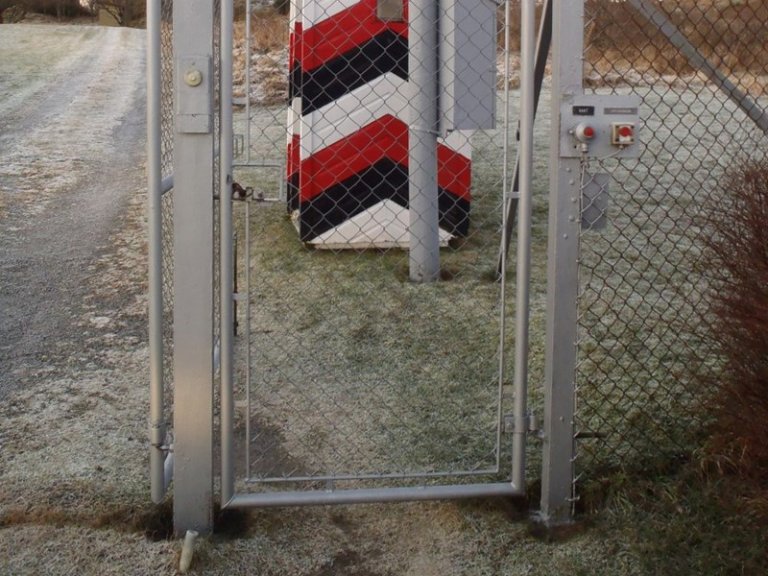
The sentry box originally came from Bolærne Fort. It was probably built by the Germans during the war with the typical panel pattern and colours.
After the war, the sentry box was moved to Håøya in the Tønsberg Fjord, and then to Oddane in 1996.
Halvard Oddane explains:
Quarters
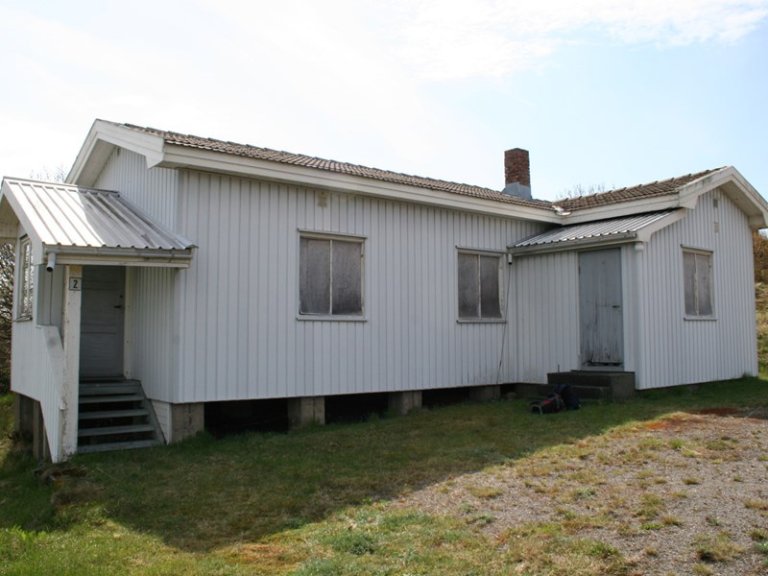
Built in 1941 as offices.
In the post-war period it was used as quarters before the interior was modified so it could be used for storing clothing and materiel.
In 1970, the building's exterior was clad in plastic panels, but much of the original building remains intact.
Halvard Oddane explains:
KuSy
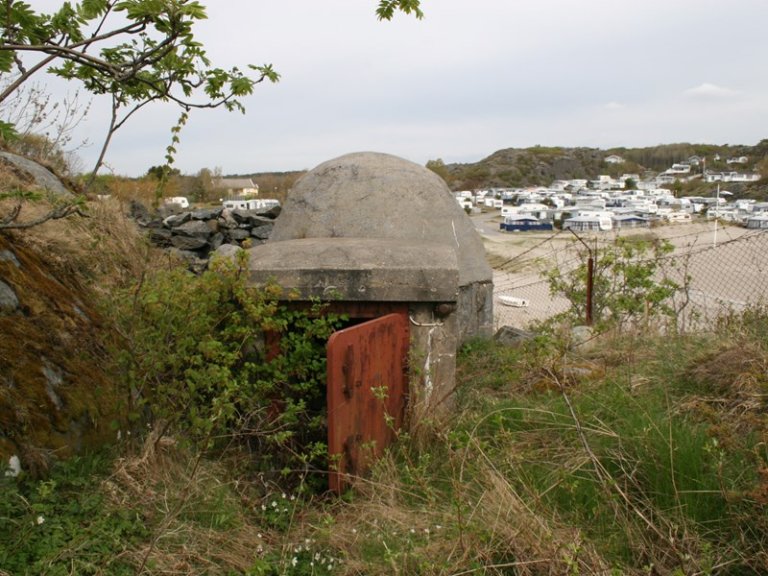
KuSy stands for Kuppel Sylindrisk (cylindrical dome).
This is a bunker built in the late 1950s. The position was built to strengthen close defences, and it is strategically located at the rear of the beach, in order to secure the north-eastern part of the fort.
There are two of this kind in the area. When they were built, they were considered to be atomic bomb proof.
Halvard Oddane explains:
Machine gun emplacements
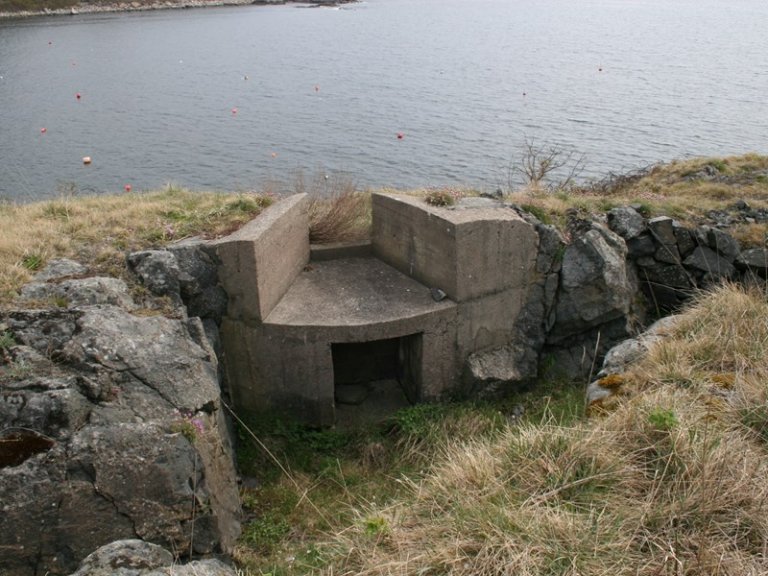
Three emplacements connected by an angled trench. Located on the eastern edge of the fort for monitoring the seaward side.
The concrete steps down to the beach were built by Halvard Oddane’s grandfather in 1925. The staircase leads to a jetty that during the war was used for fishing.
The foundations for a fishing cottage are preserved.
Halvard Oddane explains:
Floodlight
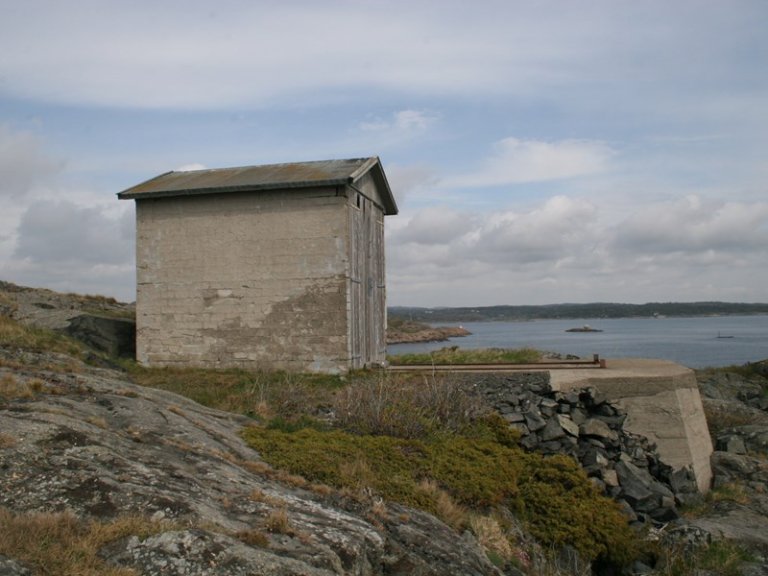
On the southern perimeter of the fort there is a searchlight, two machine gun positions with trenches and a bunker used as quarters, all built by the Germans.
The searchlight was installed to aid searches and aiming in the dark. The machine gun positions were constructed for protection and the bunker for use as quarters.
The searchlight's housing is from the 1950s, but the searchlight itself is from 1936.
It is tiltable and can swivel through 360 degrees. It has a range of about 20,000 metres. It is one of the few remaining of its kind in Norway.
Halvard Oddane explains:
Bunker used as quarters
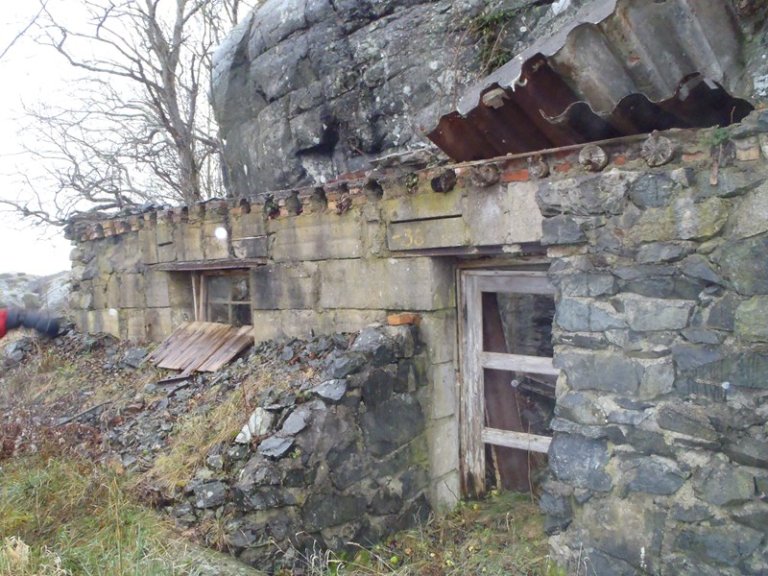
Built by the occupying forces.
This area was more protected from enemy attack, therefore the construction is somewhat simpler than the other bunkers at the fort.
The roof structure consists of bearing timbers with trapezoidal steel sheets with concrete and loose stone on top.
Halvard Oddane explains:
Quarters
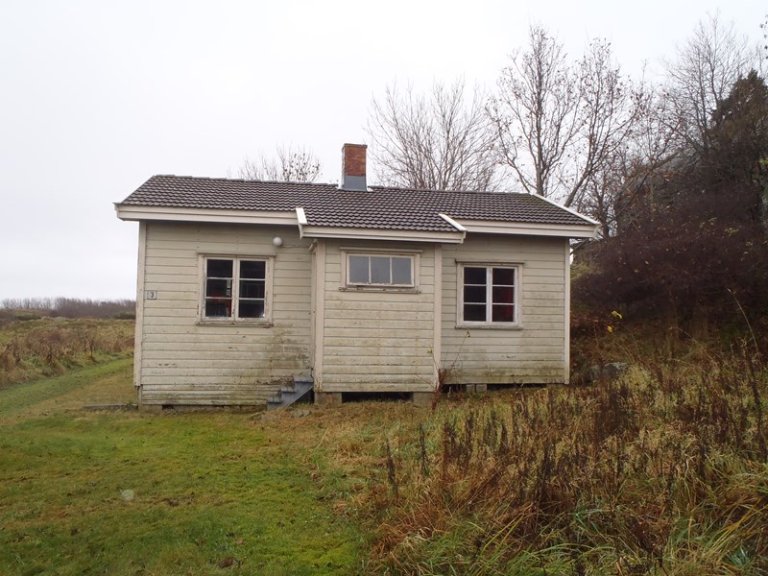
Built in 1941-42 as quarters, also called the «Lieutenant’s Quarters».
Both the Norwegian Coastal Artillery and the Norwegian Naval Home Guard used the quarters in the post-war period.
The building was originally ochre with red window architraves. Traces of the lieutenant’s vegetable garden can be found on the eastern and southern sides of the building.
The current interior with its bunk beds is from the post-war period.
Halvard Oddane explains:
Depotbrakke
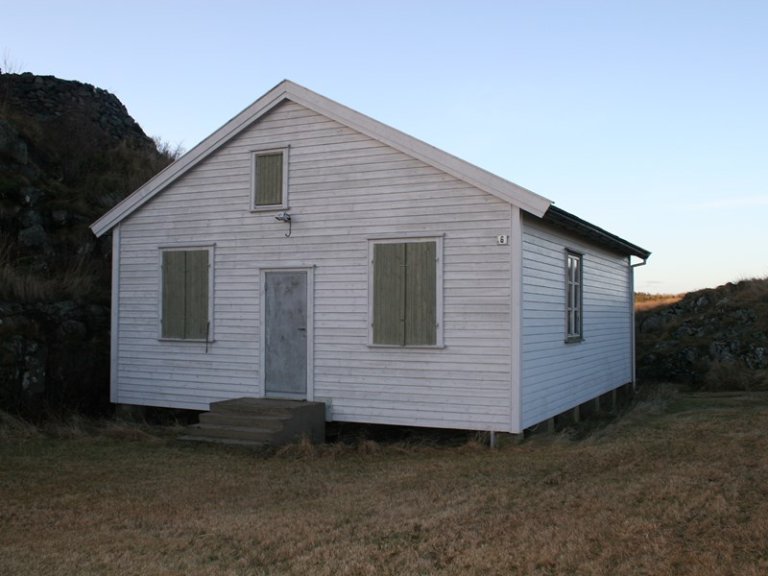
Bygget i 1941 – 1942.
Fra 1957 brukt som depot for lagring av mobiliserings-materiell for Kystartilleriet.
Senere brukt som snekkerverksted, lager, kontor og undervisning av Heimevernet og Sjøheimevernet.
Halvard Oddane forteller:
Machine gun position
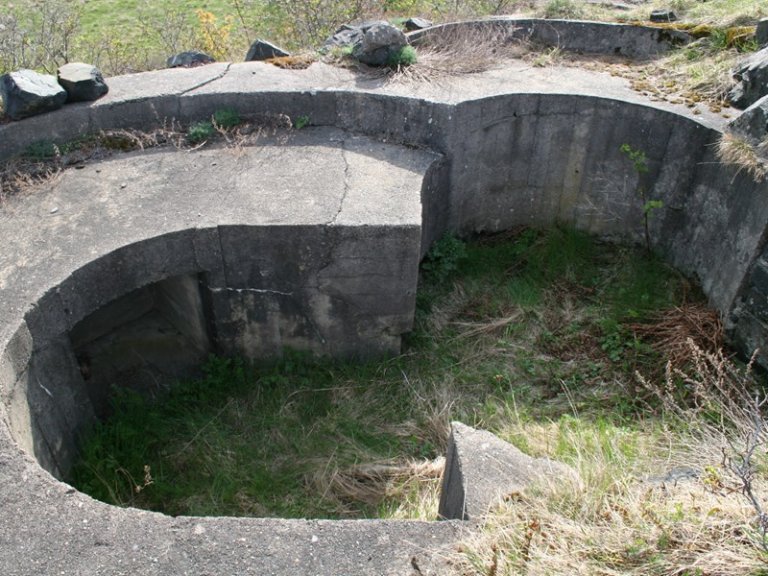
Built in 1941 to cover the fort's outer perimeter towards the north.
Close defence positions like this are spread around the fort and represent an important element of the German fortification system.
Halvard Oddane explains:
Kanon 1
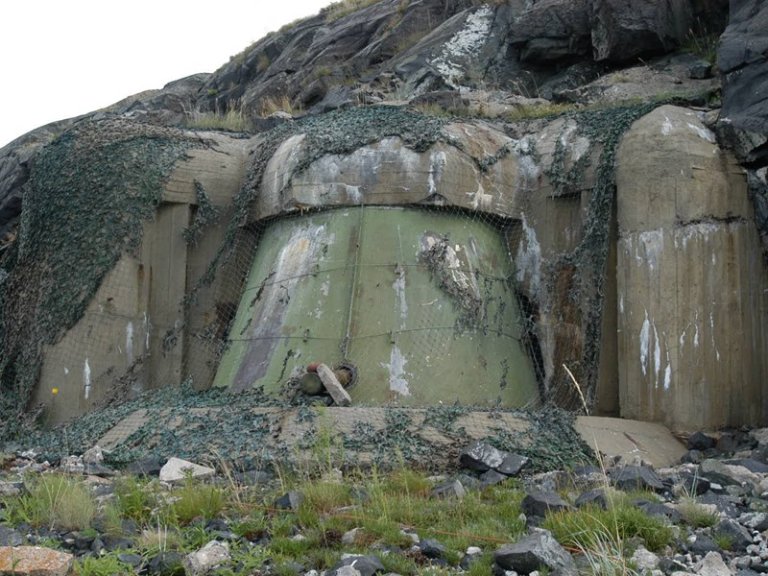
Bygget i 1941 til en fransk 10,5cm feltkanon.
I 1944, etter direktiv fra Hitler, ble kanonen dekket med en kasematt bygget etter tyske standard tegninger Regelbau nr. 671.
I 1958 ble kanonen erstattet med en tyskprodusert 10,5cm C/32. Halvard Oddane forteller:
Garasjer
Nødutgang
Bombekasterstilling

Bygget i 1941 bak fjellskrenten og godt dekket mot fiendtlig ild.
Stillingen er 8-kantet med en sentral søyle hvor selve bombekasteren var festet, og kunne skyte gjennom åpningen i taket.
På veggene hadde tyskerne risset i betongen et «kart» over bombekasterens virkeområde med peiling og avstand til de forskjellige mål utenfor fortets område.
Bombekasteren var av type 5cm M1936.
Halvard Oddane forteller:
Infermery
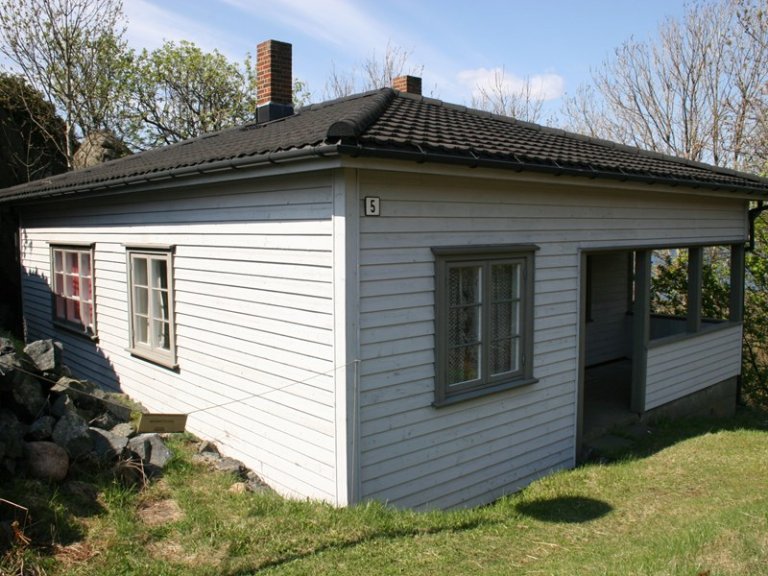
First built in 1941; it burned down on New Year's Eve 194 1- 42 when the furnaces were overloaded.
An identical building was built in 1942. Built as an infirmary with a medical office and ward. Its fittings were modern for the period with baths, tiled floors and toilets.
The Norwegian Home Guard used the building for offices and quarters until 1997.
Halvard Oddane explains:
Bunker 1013
Bygninger
Cannon 2
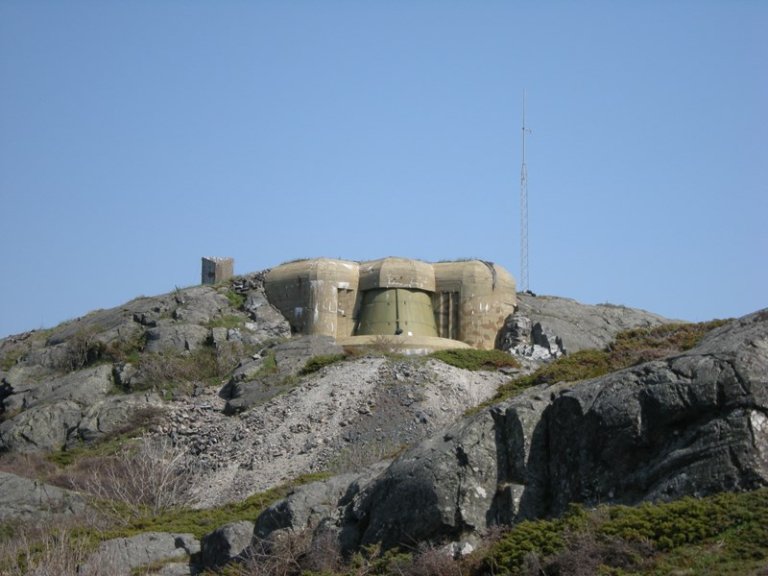
Cannon 2 was last fired in 1991 and had a range of 15,000 metres.
The Cannon is a French produced 10.5 cm C732 from 1958. This gun emplacement was built in 1941.
The casemate is from 1944, built on Hitler's orders in accordance with Regelbau no. 671.
Halvard Oddane explains:
Bunker
Oerlikon anti-aircraft position
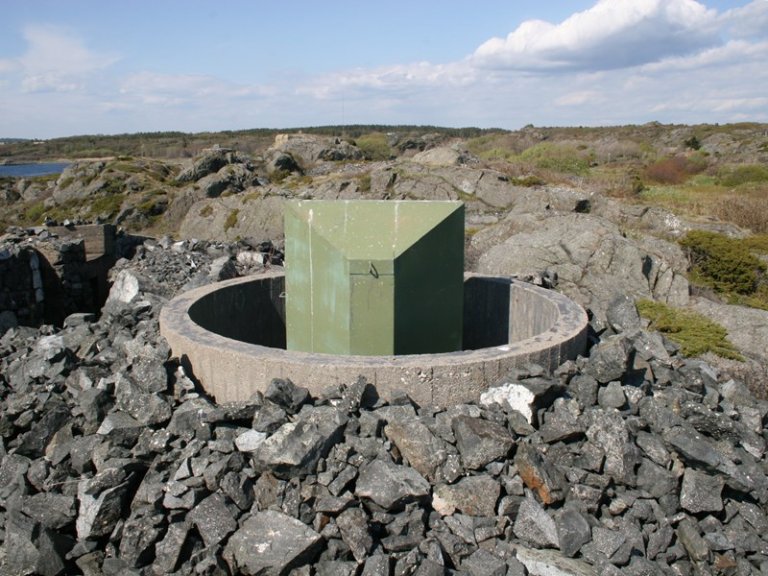
Position for 20 mm Oerlikon anti-aircraft gun.
This was established in 1961 along with a further seven. Was often used by the Norwegian Coastal Artillery for training purposes, until 1981 when all of the anti-aircraft guns were decommissioned and removed.
The weather protection remains in place.
Halvard Oddane explains:
Cannon 3 in "toad shield" turret
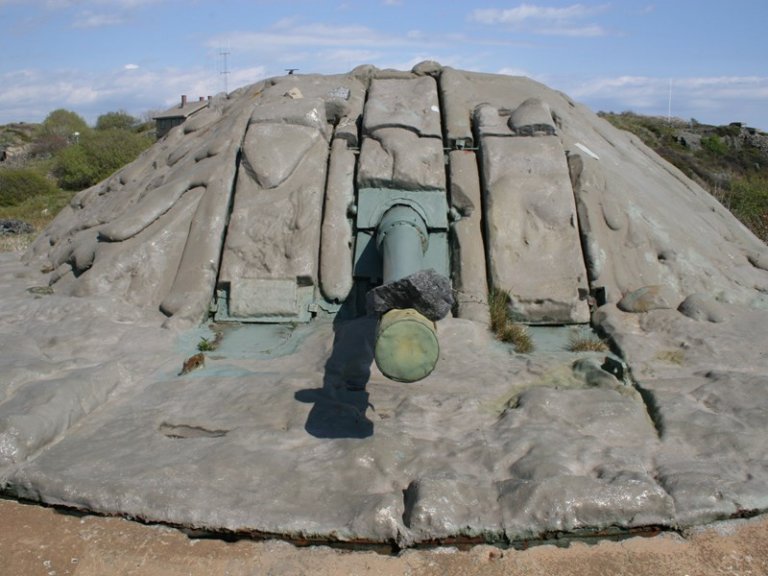
This gun, a German 10,5 cm C/32, is larger and more modern than the other two in the fort. It is a rapid fire gun with a vent for gases and cache, but is the same calibre.
The gun was installed in 1958 and protected by a so-called «toad shield» turret made of foam and fibreglass and painted with camouflage paint.
It blends in so well with its surroundings that during the Blue Fox exercise in 1968 the fighter aircraft could not find it!
Halvard Oddane explains:
Movable garages
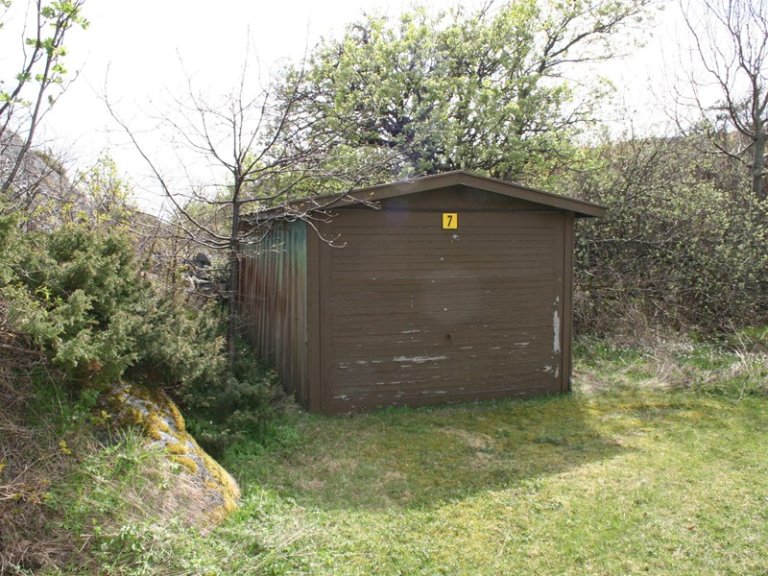
Four cold garages built in around 1960 using metal sheeting (corrugated iron) for the walls and roofs.
This type of movable garage was produced in Larvik and represents a type of prefab that was much used by both civilians and the military.
The Norwegian Naval Home Guard used them to store crates of small arms ammunition, gun carriages for the Colt machine gun, naval materiel such as swimming vests and camouflage materiel.
Halvard Oddane explains:
Command post
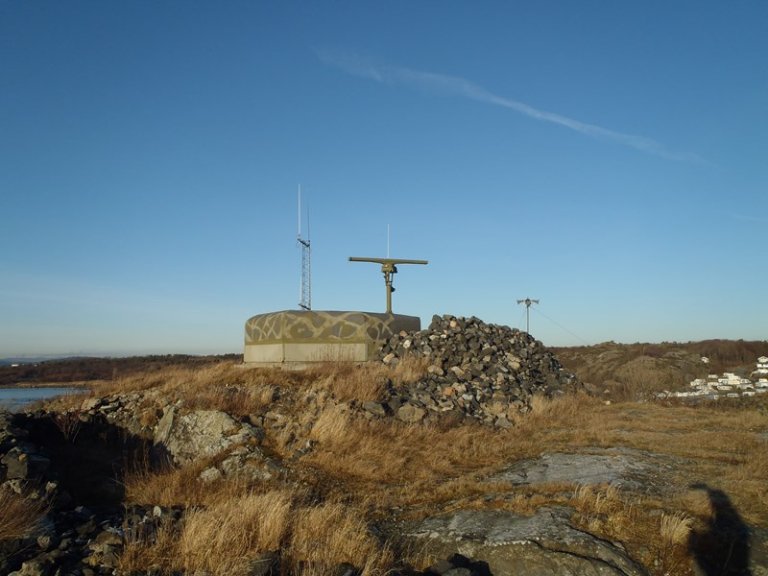
The command post has two entrances, one from «Fritz Allé» via a long, covered staircase, and one from the north-west, just below the top of the actual bunker.
This is the highest point in the fort. The distance to the island of Jomfruland is 18,000 metres and the distance to Svenner lighthouse is 17,000 metres.
The bunker comprises two rooms that contained the most important operative functions: the central control room with fire control, communications, radio and range-finding.
A swastika with an iron heel has been engraved into the staircase leading down from the command post to the dovecote.
Halvard Oddane explains:
Reserve KO-plass
Penguin
Bunker 1031 og 1032
Sanitetsbunker
Nødstrømsaggregat
Bunker used as quarters
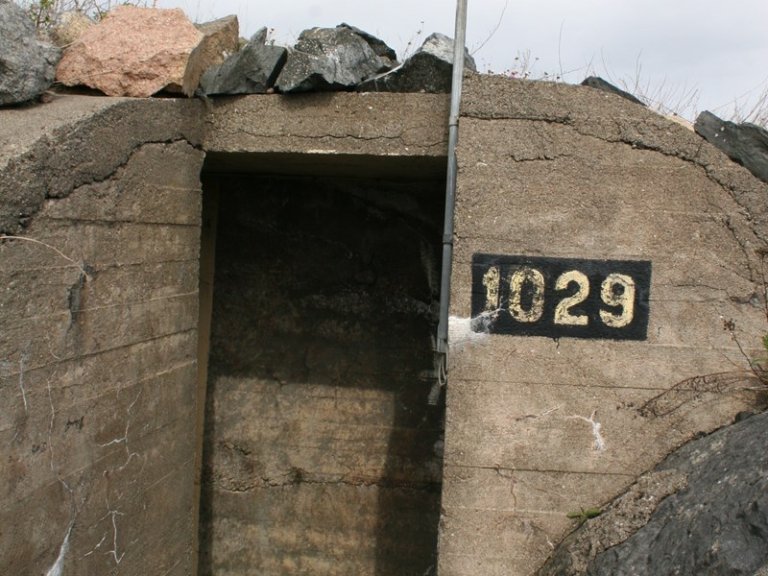
Built in 1940-45 as an ammunitions bunker, but later used as quarters.
It is an example of a German «Regelbau», i.e. a standardised design. Such standard designs were used for bunkers, casemates and other positions.
Constructed in reinforced concrete with 30 cm thick walls and an arched ceiling.
Halvard Oddane explains:
Emplacement for a 40mm Bofors gun
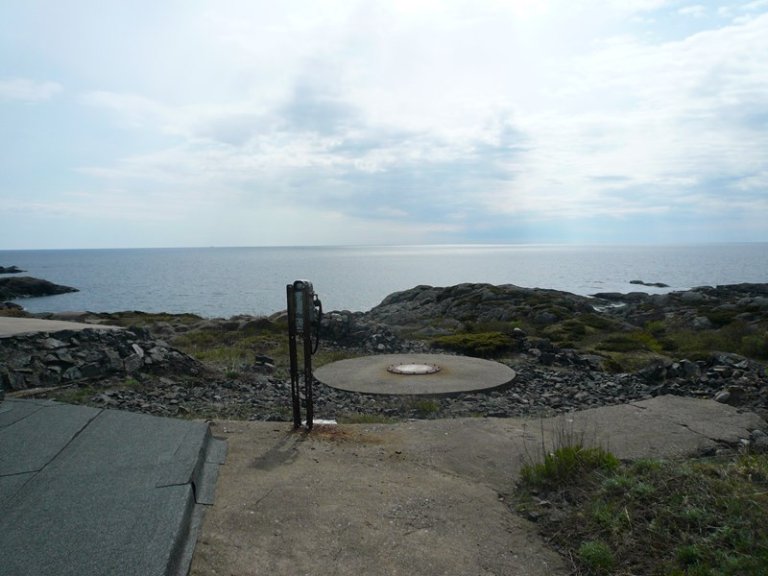
The emplacement was built in 1961 for a 40mm Bofors gun L/60, located on the site of an earlier German built gun emplacement.
Anti-aircraft defences were implemented at all the flank forts in Oslo fjord following the modernisation in 1961. Oddane fort had 2 guns, plus one more that was mobile.
The guns were decommissioned in 1992 and were not replaced.
Halvard Oddane explains:
Cannon 4 / Command post
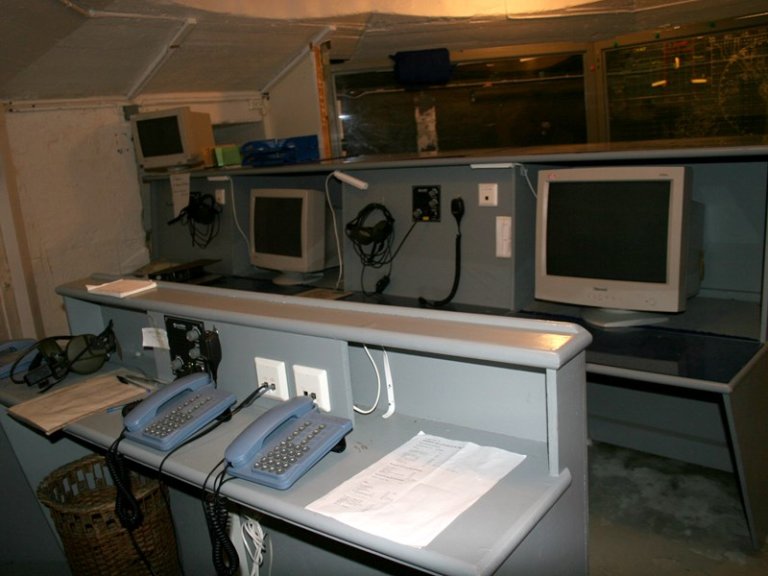
The command post was built on the emplacement for a 10,5 cm field gun that was in use during the war.
The gun was removed in 1958 and its pivot used as a fixture for the new plot, i.e. a map with plotted positions.
All of the inventory remains as it was when the fort was decommissioned in 2005.
Halvard Oddane explains:
Radar and communications bunker

Built in 1940 - 45 it houses a radio room, telephone switchboard and two rooms used as personnel quarters.
Messages arrived here from the close defence positions and observation posts located around the fort before being forwarded to the command post. The bunker was used by the Norwegian Naval Home Guard until 2005. From 1958 the bunker functioned as a command post.
Halvard Oddane explains:
Lendeorientering
Commanding Officer's Quarters
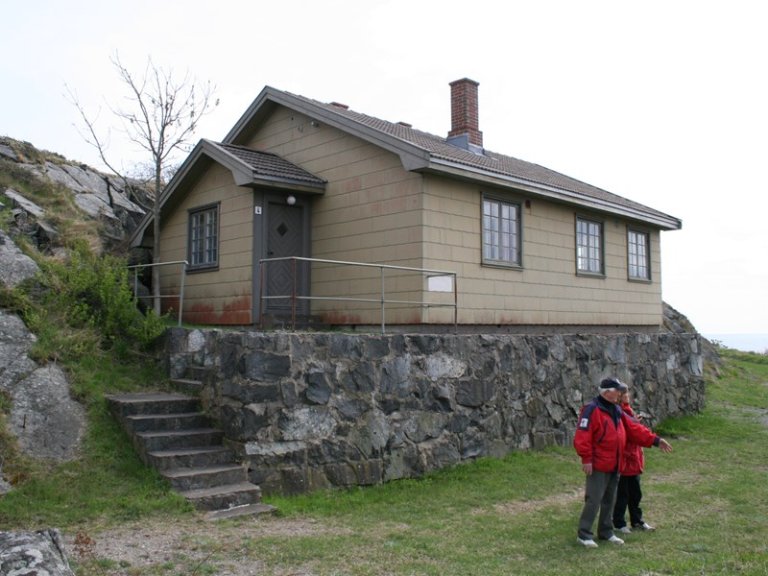
Built in 1941 as quarters for the German commanding officer, Altman Beech.
After the war it was taken over by the Norwegian Coastal Artillery and used as officers' quarters. The Norwegian Naval Home Guard's district commanding officer had an office here.
The building represents a plain, standard type of German building that used solid, standardised materials. Newer elements such as the Korea panelling in the fireplace lounge and the exterior fibre-cement boards relate something of its post-war history.
Halvard Oddane explains:
Øvelser
Kjøkken og spisesal
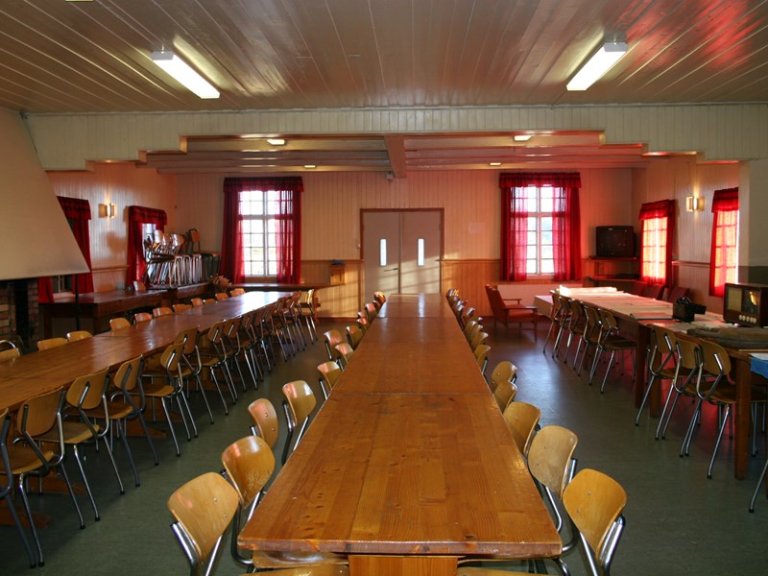
Bygget i 1941-42 som messebygning, en bygningstype som ble kalt «Casino» av tyskerne, siden den også ble brukt til fritidsaktiviteter og sosiale samlinger.
Senere brukt av både Kystartilleriet og Sjøheimevernet frem til 1.juli 2005.
Bygningen har en stor spisesal for mannskaper og et mindre spiserom for befal. I tillegg er det kjøkken, toaletter, verksted, lagerrom, kontor. Deler av kjellerveggen er avrundet og har et stort skyteskår til overvåking av fortets hovedport.
Eksteriøret og interiørene er opprinnelige, bortsett fra mindre endringer i etterkrigstiden. Halvard Oddane forteller:
Paravane
Fritz allé
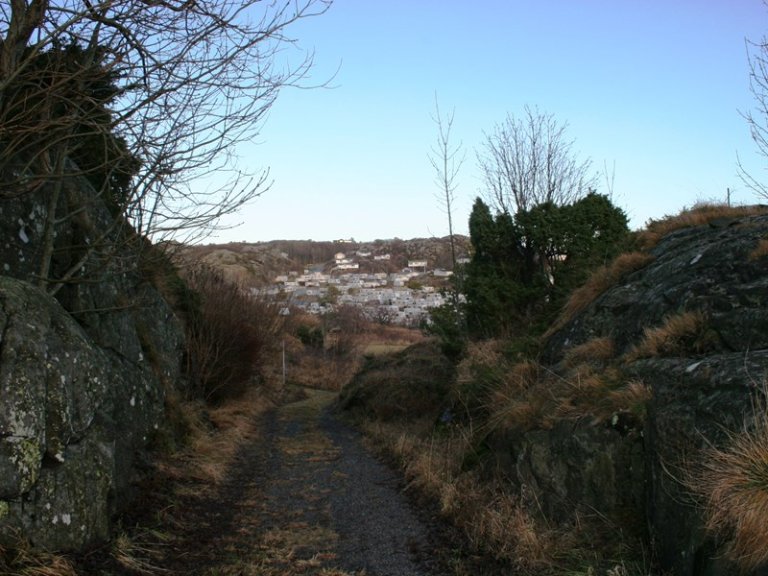
The stretch from the kitchen and mess hall up to the commanding officer’s quarters has in recent years been called «Fritz Allé» after a German soldier who is said to still «appear» here.
Halvard Oddane explans:
